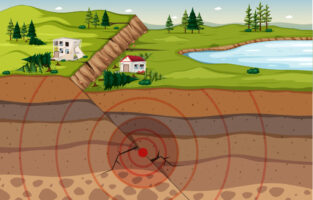THE IMPORTANCE OF BUILDING CODES IN EARTHQUAKE-PRONE AREAS
The Importance of Building Codes in Earthquake-Prone Areas
Introduction
Earthquakes are natural disasters that can cause immense destruction and loss of life. In earthquake-prone areas, the importance of building codes cannot be overstated. These codes are a set of regulations and standards that dictate the design, construction, and maintenance of buildings to ensure their resilience against seismic activity. This article explores why building codes are crucial in earthquake-prone areas, highlighting key points to underscore their significance.
1. Public Safety
The primary purpose of building codes in earthquake-prone areas is to ensure public safety. By adhering to these codes, builders and developers create structures that can withstand the forces generated by earthquakes. This, in turn, minimizes the risk of injuries and fatalities during seismic events, protecting the lives of residents and occupants.
2. Property Protection
Building codes also serve to safeguard property. In an earthquake, buildings that meet code requirements are less likely to sustain extensive damage. This not only reduces repair and reconstruction costs but also helps preserve the economic stability of the affected region.
3. Reduced Economic Impact
When buildings meet earthquake-resistant standards, the economic impact of seismic events is significantly diminished. The costs associated with rebuilding and recovery are far lower for areas where building codes have been enforced. This benefits both individuals and communities as they can recover more quickly from the aftermath of an earthquake.
4. Infrastructure Resilience
Infrastructure, such as bridges and utilities, is critical for the functioning of any community. Building codes extend beyond just individual structures, as they also encompass the design and construction of essential infrastructure. This ensures that vital services remain operational even after a significant earthquake, allowing for quicker recovery and minimal disruption to daily life.
5. Long-Term Sustainability
Building codes promote long-term sustainability. By constructing earthquake-resistant buildings, we reduce the need for frequent rebuilding and repair, thus saving valuable resources. This sustainable approach helps in the conservation of materials and reduces the carbon footprint associated with construction and demolition.
6. Regulatory Compliance
Compliance with building codes is often a legal requirement. Violating these codes can lead to legal repercussions, including fines and restrictions on building activities. This regulatory framework ensures accountability and enforces a higher standard of construction, which is particularly crucial in earthquake-prone areas.
7. Technological Advancements
Building codes evolve to incorporate the latest technological advancements. Research and development in the field of seismic engineering continually improve our understanding of earthquake behavior and how to design structures to resist its forces. Adhering to updated building codes enables the implementation of cutting-edge seismic mitigation techniques.
8. Insurance Benefits
Insurance providers often offer reduced premiums to property owners who adhere to building codes. This not only incentivizes compliance but also makes earthquake insurance more accessible to a wider population. In the event of an earthquake, insurance coverage can be a lifeline for those who have invested in earthquake-resistant construction.
9. Public Awareness
Building codes help raise public awareness about earthquake risks and preparedness. The mere existence of these regulations prompts discussions and educates individuals about the potential dangers of living in an earthquake-prone region. This knowledge empowers people to take proactive measures to protect themselves and their families.
Conclusion
In earthquake-prone areas, building codes are not merely a set of guidelines; they are a lifeline. They offer protection to both lives and property, reduce the economic impact of earthquakes, and ensure the long-term sustainability of communities. It is imperative that individuals, builders, and governments understand and enforce these codes to create a safer and more resilient environment in the face of seismic threats. The importance of building codes in earthquake-prone areas cannot be overstated, and their value becomes evident when disaster strikes.


